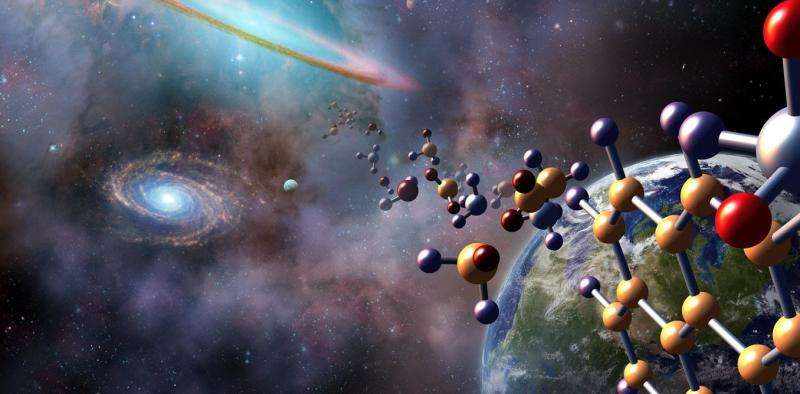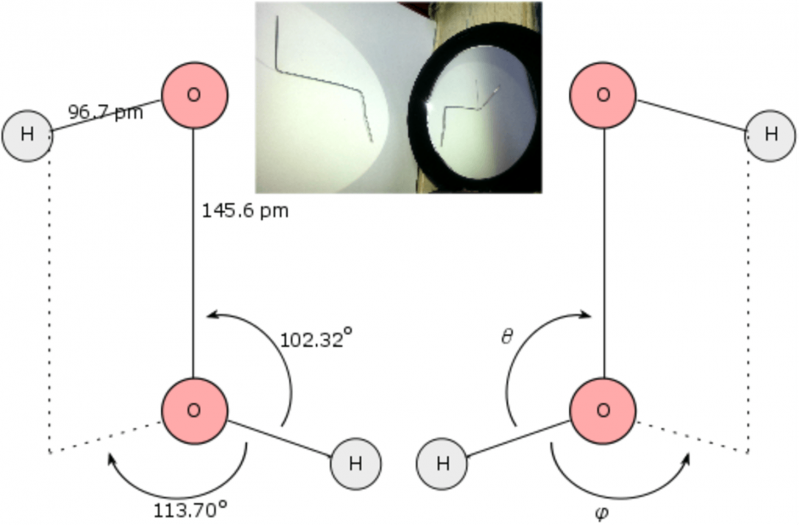The riddle of life's single-handedness

Try shaking a colleague's left hand with your right hand. It just doesn't work, does it? Your right palm and her or his left palm cannot mesh comfortably because hands are chiral objects, having non-superimposable mirror images.
All objects have a mirror image (with the exception of vampires), but only objects that are not superimposable on their mirror image are chiral. So when we say that an object and its mirror image are superimposable, we mean that if we were to bring the image from behind the mirror, it could be made to coincide exactly with the object.
So a three-dimensional object is either chiral, or it is not.
Life's building blocks are chiral
Molecules are tiny, three-dimensional objects too, and many of them are chiral. Louis Pasteur discovered this in 1848. A chiral molecule and its mirror image are called a pair of enantiomers. In the non-living universe, enantiomers of chiral molecules are expected to occur in equal parts, called racemic mixtures.
Chiral molecules that have been detected in interstellar dust and gas clouds are hydrogen peroxide and, this week, propylene oxide.
Some of the most important molecules of life, such as the nucleotides that make up the polymeric nucleic acids DNA and RNA, exist in principle as pairs of enantiomers known as D and L, or "left-handed" and "right-handed" forms.
A fact that has puzzled scientists for generations is that living organisms contain only D nucleotides! In other words, life is homochiral.
In itself, the homochirality of life is unremarkable. Scientists have shown in the lab that heterochiral DNA and RNA cannot function, or even form. But the big questions is: why is life as we know it D rather than L?

What was the mechanism, at the origin of life, by which D nucleotide polymers were selected and amplified to homochirality, while the L species became extinct?
Most of the other main building blocks of life – the amino acids – are chiral too, and in this case life uses the L enantiomers exclusively. Last year, it was proposed that a special type of L-glycine (normal glycine is the simplest amino acid, and is not chiral), may have helped produce the other L amino acids. But this mechanism cannot have directed the D-nucleotides of life, such as DNA and RNA.
Enter hydrogen peroxide
Late last year, my colleague and I proposed that hydrogen peroxide was the agent that mediated amplification of an initial small excess of D polynucleotides to homochirality.
We know that hydrogen peroxide is present on Mars, Enceladus and Europa, and it was produced on the ancient Earth, more than 3.8 billion years ago, which is around the time that life emerged. As mentioned above, it has also been detected outside the solar system.
In our previous research, we showed that hydrogen peroxide may have provided the essential periodic drive for pre-cellular proto life (the "RNA world").
In our most recent study, we focused on another remarkable property of hydrogen peroxide: it is the smallest and simplest chiral molecule itself, occurring as a pair of enantiomers called M and P.
Now, chirality begets chirality. This is a consequence of Curie's principle, which states that "the symmetry of a cause is always preserved in its effects". In other words, to achieve a chirally selective synthesis, separation or amplification, a chiral agent or force is needed.
In fact, chiral organic peroxides have been used in the lab to mediate the production of homochiral molecules. This tells us that, in principle, hydrogen peroxide can act similarly.

It is thought that a small excess of L-amino acids was "rained" onto the ancient Earth by meteorite bombardment, and scientists have found that a small excess of L-amino acids can catalyse formation of small excesses of D-nucleotide precursors. This, we proposed, led to a marginal excess of D-polynucleotides over L-polynucleotides, and a bias to D-chains of longer mean length than L-chains in the RNA world.
In the primordial soup, local excesses of one or other hydrogen peroxide enantiomer would have occurred. Specific interactions with polynucleotides destabilise the shorter L-chains more than the longer, more robust, D-chains.
With a greater fraction of L-chains over D-chains destabilised, hydrogen peroxide can then "go in for the kill", with one enantiomer (let us say M) preferentially oxidising L-chains.
Overall, this process works in favour of increasing the fraction and average length of D-chains at the expense of L-species.
But the hydrogen peroxide itself remains a racemic mixture, on average, meaning that over time and space it has a balance of M and P enantiomers. So we have a subtle reinforcement effect: the fraction D/P increases while the fraction L/M decreases over time.
Thus, the emergence of homochirality in itself confers a significant advantage on replicating RNA species.
But could there be mirror-image life made of L-nucleic acids elsewhere in the universe?
Well, all I can say at this stage is that when one reflects on it (or attempts to, so to speak), in a sense we are all vampires, made of molecules that have no natural mirror images on this world, and forever searching the universe for our lost reflections.
Source: The Conversation
This article was originally published on The Conversation. Read the original article.
![]()




















